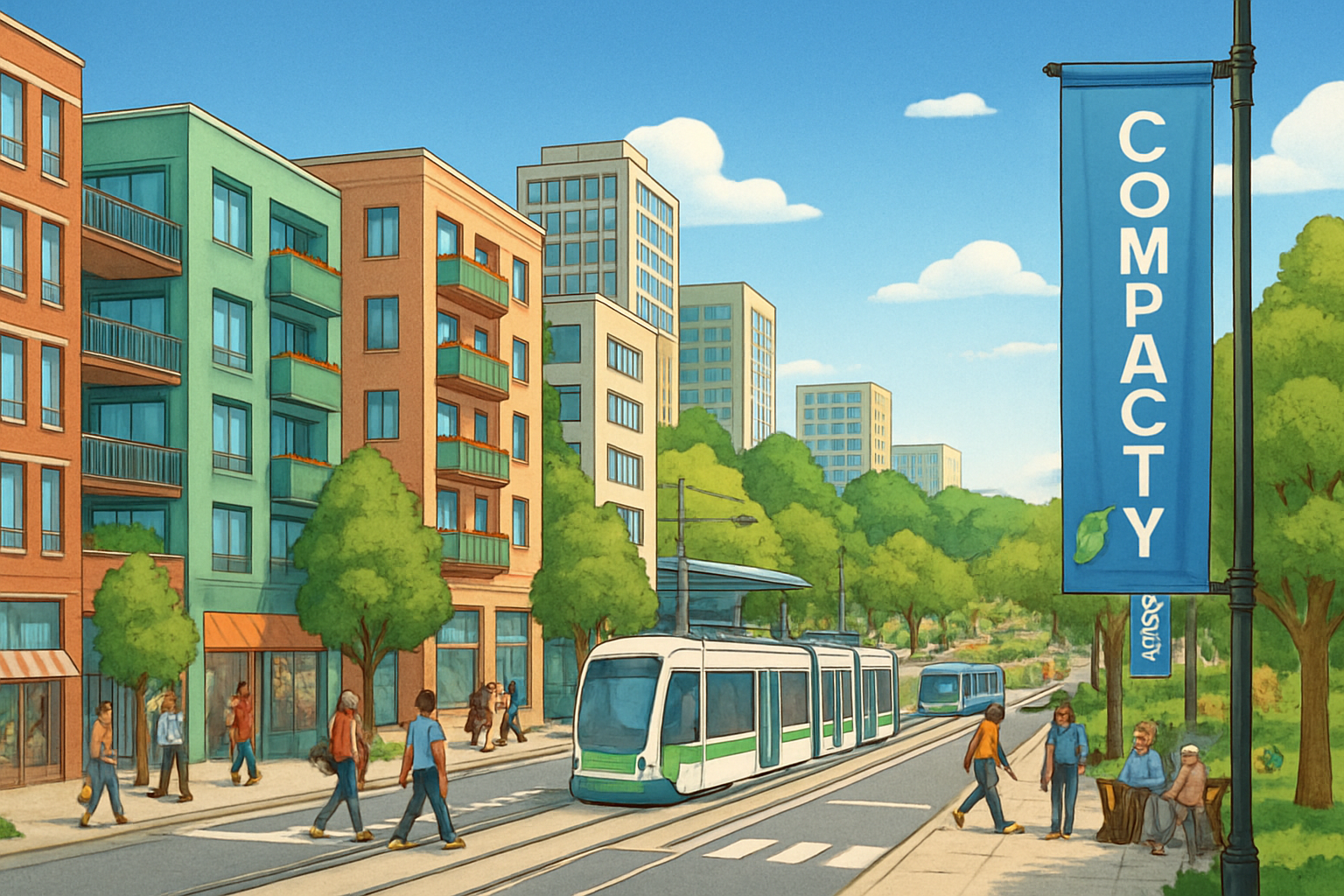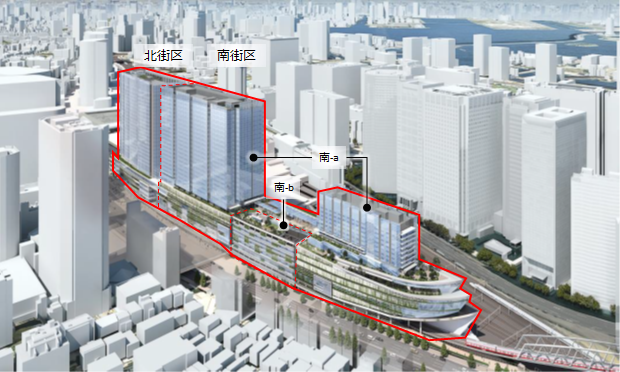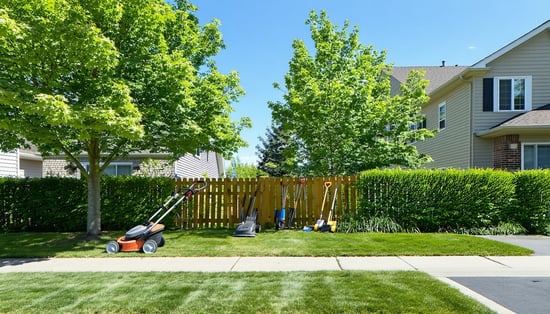One of the most common causes of neighborhood problems is the problem of tree branches crossing the boundary from neighboring properties. The Civil Code was amended on April 1, 2023, to clarify the right to cut off cross-boundary branches under certain conditions , thereby expanding the options for solving the problem. nbsp; has been clarified, expanding the options for resolving problems. This article explains the contents of the revised Civil Code Article 233 and how to deal with it in practice. In the event of an actual problem, consultation with a specialist (lawyer or judicial scrivener) is recommended.
Background and Overview of the Amendment to the Cutting Rules for Transboundary Branches
Problems before the amendment
Under the previous Civil Code, the owner could cut off the roots that crossed the boundary from the neighboring land by himself, but he could only request the owner to cut off the branches. However, in practice, there have been many cases where owners of neighboring land did not agree to cut branches for various reasons, and the following problems existed.
- If the owner did not agree to the cutting, it was necessary to file a lawsuit.
- If the owner was unknown or could not be located, it was difficult to deal with the situation
- In the case of co-owned land, it was necessary to obtain the consent of all co-owners
- Emergency response was limited.
In order to solve these problems, the revised Civil Code enacted in 2021 came into effect on April 1, 2023, and the rules for cutting cross-boundary branches have changed significantly.
Article 233 of the Amended Civil Code
Article 233 of the Civil Code after the amendment has the following contents.
Article 233 When a branch of a bamboo tree on adjacent land crosses the boundary line, the owner of the land may have the owner of the bamboo tree cut off the branch.
2 In the case of the preceding paragraph, when the bamboo tree belongs to the common ownership of several persons, each co-owner may cut off the branch.
3 In the case of paragraph 1, when the following occurs, (1) the owner of the land may cut off the branch
(i) when the owner of the bamboo tree does not remove the branch within a reasonable period of time despite having notified the owner of the bamboo tree to remove the branch
(ii) When the owner of the bamboo tree cannot be known or his/her whereabouts cannot be ascertained.
(iii) When there are urgent circumstances.
4 When the roots of a bamboo tree on an adjacent property cross the boundary line, the roots may be cut off.
This amendment legally clarifies when a person can cut off a cross-boundary branch by himself/herself.
Comparison before and after the amendment
A comparison of the rules before and after the amendment shows the following differences.
| Item | Before amendment | After amendment |
|---|---|---|
| Basic Principle | Branches must be cut by the owner Roots can be cut off by themselves |
Branches are to be cut off by the owner in principle Roots can be cut off by themselves |
| In case of shared bamboo trees | No regulation (consent of all co-owners is required) | Each co-owner can cut branches independently |
| If the owner does not cut them out | Lawsuit is required | After a reasonable period of time has elapsed since the notice, the branch can be cut off by the owner. |
| If the owner is unknown or his/her whereabouts are unknown | Difficult to deal with | Can be removed by oneself |
| In case of emergency | Difficult to respond | Can be cut out by oneself if there are urgent circumstances |
| Cutting cost | Bamboo owner bears the cost in principle (Tort, unjust enrichment) |
In principle, the owner of the bamboo tree bears the cost (Tort and unjust enrichment) |
Conditions and procedures for cutting off branches by oneself
Under the revised Civil Code, it is now possible to cut off cross-boundary branches by oneself in the following three cases.
(1) Cases where the branch is not cut off after a notice
If the owner of a bamboo tree does not remove the branch within a reasonable period of time despite a notice to the owner demanding removal of the branch, the owner may remove the branch by himself/herself.
Procedures:
- Identify the owner of the adjacent land (check the certificate of registered matters, etc.)
- Give a written notice demanding the removal of the branch.
- Wait a reasonable period of time (generally about 2 weeks)
- If the branch is not removed within the period, you may cut it off yourself
(2) If the owner of the bamboo tree is unknown or his/her whereabouts are unknown
If the owner of the bamboo tree cannot be known or his/her whereabouts cannot be ascertained, the branch can be cut off by himself/herself without a notice.
Procedure:
- Conduct a reasonable investigation to identify the owner (registry search, resident certificate inquiry, etc.)
- If it is determined that the owner is unknown or his/her whereabouts are unknown, he/she may cut the branch by himself/herself.
(iii) When there are pressing circumstances
If there are urgent circumstances , such as when a branch is about to break due to a typhoon or strong winds, or when there is a danger of fire, the tree owner may cut it down without notice.
Examples of pressing circumstances:
- The branch is in danger of breaking due to strong winds or typhoons.
- The branch is in contact with a building and causing damage
- There is a risk of fire
- Significantly obstructing the safety of pedestrians.
Special Provisions for Shared Bamboo Trees
If a bamboo tree is owned in common by multiple owners, before the amendment it was difficult to cut it down without the consent of all co-owners, but after the amendment, each co-owner can cut down the branches independently. As a result, even if some co-owners are unknown or do not respond, the branch can be cut if there is a co-owner who can respond.
Practical considerations for cutting cross-boundary branches
Entry to and extent of adjacent land
It may be necessary to enter the adjoining property to cut away cross-boundary branches, if necessary. According to Article 209 of the Revised Civil Code, adjacent land may be used to the extent necessary to cut away cross-boundary branches. However, the following points must be noted
- It is desirable to notify the owner of the adjacent land in advance.
- Only enter to the minimum extent necessary
- If damage is caused to the neighboring land, you will be liable for compensation.
Extent of cutting and appropriate cutting method
When trimming cross-boundary branches, one should limit trimming to the area up to the boundary line of one's own property and should avoid unnecessarily cutting branches on the neighbor's side of the property. It is also important to use appropriate cutting methods to avoid damaging the tree.
Principles of proper resection:
- Cutting should be limited to the area up to the boundary line.
- Minimize the amount of cutting necessary for the growth of the tree.
- Hire a professional or use appropriate tools and techniques.
Cost sharing and billing
In principle, the owner of a bamboo tree should bear the costs incurred for the removal of cross-boundary branches. Claims can be made under Article 703 (unjust enrichment) and Article 709 (tort) of the Civil Code.
Flow of claiming expenses:
- Keep records and evidence of the contents and cost of the removal work (photos, estimates, receipts, etc.)
- Send a notice of intent to the owner of the bamboo tree to claim expenses (content-certified mail is preferable).
- If agreement cannot be reached, consider legal procedures such as small claims court or civil mediation
| Type of expense | Whether or not a claim can be made | Basis of law |
|---|---|---|
| Excision work cost | Can be claimed | Civil Code Article 703 and 709 |
| Request for professional contractor | Claimable | Civil Code Article 703 and 709 |
| Disposal cost | Can be claimed | Civil Code Article 703 and 709 |
| Excessive removal costs | difficult to claim | -Difficult to claim |
Preventing Trouble in Advance
Since the problem of cross-boundary branches has a high risk of developing into neighborhood trouble, it is important to keep the following preliminary measures in mind.
-
Prioritize communication
- When a problem occurs, first try to resolve it through dialogue
- Start with a verbal request rather than a written one
-
Keep records
- Take photos of the border crossing situation
- Take notes of the conversation
- Record the date and time of the exchange
-
Understand the legal basis
- Accurately understand the contents of the revised Civil Code
- Understand your rights and obligations
-
Consult with experts
- Use of free legal consultation services
- Consultation with lawyers and judicial scriveners
Cases of Border Crossing Troubles and Solutions
Case 1: Owner does not respond
Case: A branch of a tree from a neighboring property crossed the border into the homeowner's yard, blocking sunlight and causing many fallen leaves.
Solution:
- Send a written notice (preferably by content-certified mail) demanding the removal of the tree.
- After a reasonable period of time (about 2 weeks), remove the leaves by yourself.
- Keep the receipts, etc., for the removal costs and request them at a later date.
Case 2: Unknown owner
Case: The adjoining land is vacant and the owner's contact information is unknown, making it impossible to deal with the cross-boundary branch.
Solution:
- Investigate the owner with a certified copy of the registry.
- Attempt to confirm the whereabouts of the owner by inquiring about the certificate of residence, etc.
- If the owner is still unknown/unidentified, the branch can be cut by itself with a record of the investigation
Case 3: A case where a branch is damaging a building
Case: A tree branch from a neighboring property hit the exterior wall of the home in a strong wind , posing a risk of damage.
Solution:
- Judging that there are urgent circumstances, the branch can be removed without prior notice.
- However, it is advisable to explain the situation to the owner after the fact.
- If there is damage to the exterior wall, consider filing a separate claim for compensation.
Conclusion
The revised Civil Code, which came into effect on April 1, 2023, significantly changed the rules regarding the removal of cross-boundary branches. Previously, one could not remove a branch from an adjacent property by oneself, and there were cases that could only be resolved through a lawsuit.
- When the owner of a bamboo tree is not removed within a reasonable period of time (approximately 2 weeks) after a notice is given to the owner.
- When the owner of the bamboo tree is unknown or his/her whereabouts are unknown.
- When there are urgent circumstances.
In addition, each co-owner of a shared bamboo tree can now remove branches independently, expanding the options for dealing with the problem of cross-boundary branches.
When cutting cross-boundary branches, it is important to follow the appropriate procedures and to keep cutting to the minimum extent necessary. To prevent problems, it is also advisable to engage in prior dialogue and consultation with experts whenever possible.
If you have any uncertainties, utilize the free legal consultation services provided by each local government or consult an attorney or judicial scrivener to discuss appropriate measures to be taken.
Frequently Asked Questions
Q1: How long is a "reasonable period of time"?
A1: According to the commentary on the revision of the Civil Code, it is generally considered to be about two weeks. However, this may vary depending on the season, the condition of the tree, and the degree of difficulty of the cutting, so judgment should be made according to the situation.
Q2: Who pays for the cost of cutting cross-boundary branches?
A2: In principle, the owner of the bamboo tree is considered to bear the cost. It is possible to claim expenses based on Article 703 (unjust enrichment) and Article 709 (tort) of the Civil Code. However, in practice, there are cases where the owner does not agree to the claim for expenses, so it is advisable to resolve the issue through prior discussion.
Q3: Is it possible to enter the adjoining land to cut out the cross-boundary branches?
A3: According to Article 209 of the Revised Civil Code, adjacent land may be used to the extent necessary to cut away overbearing branches. However, it is advisable to keep the use to the minimum necessary extent and, if possible, to notify the owner of the adjacent land in advance.
Q4: What should I do with the cut branches?
A4: Although there are no clear rules in the law, it is generally advisable that the person who cut the branches should dispose of them or consult with the bamboo tree owner to determine how to dispose of them. As for the disposal cost, it may be possible to claim it from the bamboo tree owner as well as the cost of cutting.
Q5: What are "urgent circumstances"?
A5: The situation may be that a branch is about to break due to a typhoon or strong winds, that the branch is causing damage to a building, that there is a fire hazard, or that the branch is seriously impeding the safety of pedestrians. All of these situations are urgent, and there is a risk that the damage may increase if you wait for a notice.
Reference Information
If you found this article helpful, please check the status of trees near the boundary with the neighboring land. Regular pruning and communication with neighbors are important to prevent cross-boundary troubles. In the event of actual trouble, we recommend consulting a specialist (lawyer or judicial scrivener); INA&Associates also provides consultation on real estate matters (we can refer you to a specialist for legal advice), so please feel free to contact us for more information.

Daisuke Inazawa
Representative Director of INA&Associates Inc. Based in Osaka, Tokyo, and Kanagawa, he is engaged in real estate sales, leasing, and management. He provides services based on his extensive experience in the real estate industry. Based on the philosophy that “human resources are a company's most important asset,” he places great importance on human resource development. He continues to take on the challenge of creating sustainable corporate value.

.png)













